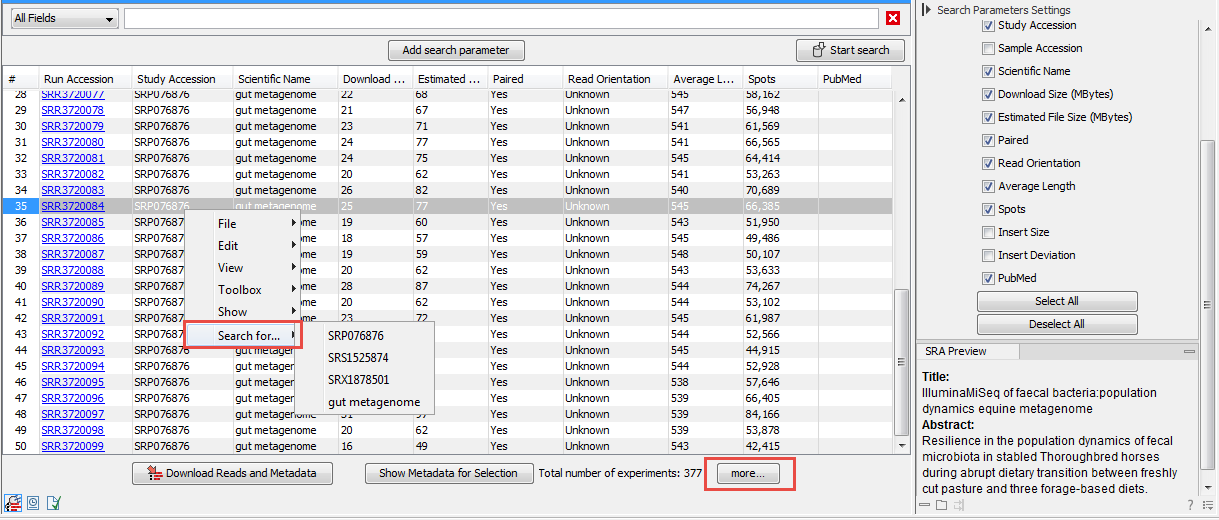SRA search output
The search results are displayed with one run per line. Each Run Accession is a hyperlink to the NCBI webpage for the run, where additional information may be found, such as the distribution of nucleotide quality scores and links to external resources. On the right hand side of the search table, a "SRA Preview" panel shows the title and abstract associated to the selected run when available.When looking for a specific run using the run SRA accession number, the tool will output the run that was searched and may also list additional runs that were submitted as part of the same experiment. In any case, it is safest to perform a new search specifically for the study to make sure the tool retrieves all possible runs. Right-click on a row to get a list of possible searches based on the selected run (figure 7.11), for example searching for more runs from the same sample, experiment or organism.
By default, the tool will output a maximum of 50 runs. The "more..." button below the table retrieves additional search results when the search exceeds 50 runs. The number of additional results returned can be controlled in Edit | Preferences | General | Number of hits (NCBI/Uniprot).
The "Total number of experiments" at the bottom of the search table reports how many experiments were retrieved, and not how many runs are listed in the table.

Figure 7.11: The SRA search result table.
At the bottom of the table, the button "Show Metadata for Selection" will create a metadata table containing sample specific information for the selected run(s). The first columns of the metadata table contain the same database identifiers as in the Search Table. The last columns recover sample details associated with the biosample. The list of all metadata available for the selected run is located in the right hand side panel of the table. This functionality is especially useful when selecting external data for use in a meta-analysis. For example, if your analysis is for a particular cancer type, and controls for patient age and gender, the "Show Metadata for Selection" facilitates the search for other datasets where the same metadata is available.
